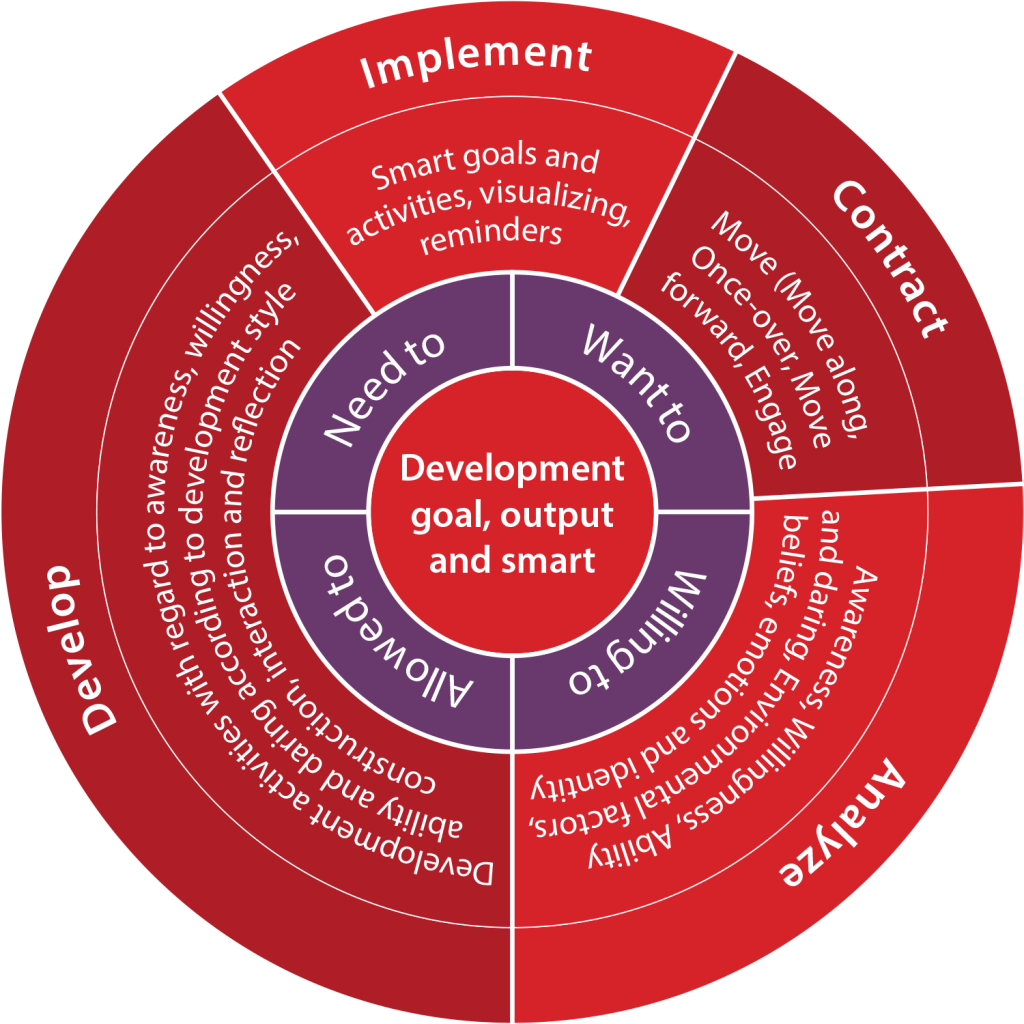As a leader, the ability to develop others is critical. Supporting your team’s professional growth is not only important to the organization’s strategy, but it fosters well-being and motivation. But when it comes to coaching, it can be hard to know where to start. A coaching model can help you stay focused on a positive outcome for everybody involved, while providing the structure to help you steer the process.
In this short series of articles, I’ll introduce the Circle Model of Coaching and describe how it works so you can use it effectively and become a better coach.
The Circle Coaching Model
The Circle Coaching Model describes the different elements and phases in a successful coaching sequence for individuals, teams, and organization(s).

Within each phase, we describe a number of simple concepts and handles that can be used to design the phase in question.
But first of all, why a circle?
In the Coaching Circle, the phases are represented as a circle because they influence each other mutually and don’t necessarily occur in the order indicated.
For example: An analysis may take place after contracting, after which another contracting moment is required, after which development activities are set out that lead to the conclusion that the analysis needs to be further refined, and so forth.
The indicated phases are also relevant at two levels:
– They apply to the entire coaching process; and
– They also apply to each separate coaching conversation in itself. Each meeting usually starts with Contracting and an Analysis of the recent period, then you will continue by devising/Developing or Implementing new development activities.
A Toolbox to Coach and Develop
The two innermost circles – the purple and red core circles – indicate that (in relation to our definition of coaching) coaching happens within the field of:
– Need to do;
– Wanting to do;
– Being able to do;
– Allowed to do.
The red, core circle emphasizes the fact that coaching is goal-oriented.
The Core: Goal-oriented Coaching
With this in mind, we believe it is important that goals are two things. They should be output-oriented (= what needs to be achieved concretely and tangibly within a certain time) and SMART (specific, measurable, acceptable, realistic and situated in time).
At this stage, an output-orientation doesn’t involve mentioning the How: the means, solutions or process for achieving the outcome.
The Field: Setting the Scene
The field in which a professional and business coaching starts can be typified by the following 4 elements:
– Need to do: The employee’s job description, what they need to know and the abilities they require to fulfill their job;
– Wanting to do: What drives someone, where do their motivation and passion come from, and what do they want?
– Able to do: What someone is capable of doing, what their strengths and development points are regarding attitude, skills, and knowledge; and
– Allowed to do: What are the short- and long-term possibilities that are available to the coachee, given their desires and competencies?
The Core and the Field are the basic principles of the Circle Coaching Model – they determine what we’re working toward (goals), and the context in which we work. The rest of this mini-series will consider the four different phases that leaders can use as a guide when coaching others.
